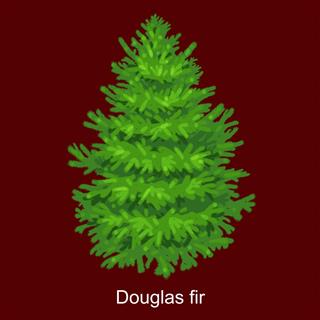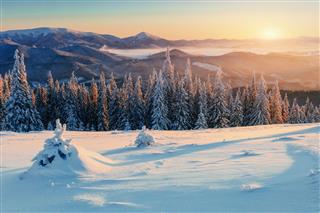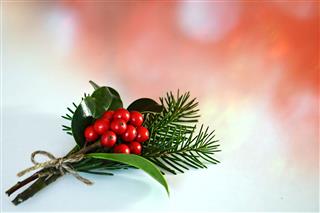
Popularly grown types of fir tree are noble firs, Fraser firs, balsam firs, Douglas firs, and giant firs. Identification of these trees is done with their needle-like leaves and cone characteristics. This article lists some information about these trees.
Most of the cut conifers sold as Christmas trees are fir trees. They belong to the family Pinaceae, and are classified under the genus name Abies. Sharing taxonomic plant family with the pines, there are about 48-55 types of fir trees. Nearly all the varieties have short needles measuring a few inches in length. These evergreen trees are prized for their pyramid-like canopy shape. An interesting fact is that the evergreen foliage is retained for more than 5 years before shedding. They are fast growing evergreen trees adapted in moist, well-drained soil in areas with cool summer temperatures.
There are two characteristics that help in identification. The first is the presence of a small-sized suction cup at the base of the needle leaf that connects it to the twig, and the second is the development of erect and cylindrical-shaped cones. The purplish female cones are developed on the topmost branches; the green, pendant shaped male cones can be found underneath. After fertilization, the female cones ripen and break open in autumn to release the seeds.
Noble
These are tall trees that can grow to as high as 200 feet, and 5 feet in diameter. In fact, they are the largest varieties of all true fir species. The leaves are silvery-green in color and range from 1-1½ inches in length. The high popularity of noble firs (Abies procera) as Christmas trees is attributed to the long-lasting leaves, even when cut. They are also used to make outdoor wreaths and garlands.
Fraser
These trees (Abies fraseri) are named after the renowned botanist, John Fraser, who studied them in detail. The adult trees grow to about 80 feet at maturity. The needle leaves are flat, ½-1 inch long, dark green in color, possess a strong fragrance, and are arranged spirally on the branches. The distinctive features of these landscaping trees are their small size and branches that grow in an upwards direction.
Douglas
The Douglas trees are highly fragrant Christmas trees and can survive for 500 years on an average, sometimes even more than 1000 years. They are not true firs, hence the scientific name for these evergreen trees is Pseudotsuga menziesii. The foliage is flat, bluish-green in color, and measure about 1-1½ inches in length. Distinctive features include forked bracts, winged seeds, and furrowed barks.
Balsam
Balsam (Abies balsamea) or blister firs are native to the cool regions of North America and Northeastern America. The leaves are ¾-1½ inches in length, and the bark of young trees has conspicuous resin blisters. These evergreen trees attain a height of about 15-60 feet at maturity, with a spread of about 25-30 feet. These fir types are common Christmas trees, especially in Northeastern America.
Grand
Also called giant fir trees, they are represented by the scientific name, Abies grandis. The common name is coined with reference to their height, which measure about 300 feet. They are easily identifiable from other types of fir by their lustrous green, needle-shaped leaves, arranged in rows of two on a single plane. The leaves give a citrus scent when crushed. Giant firs are planted as ornamental trees in formal gardens and large public parks.
Nearly all the different types are economically important for the production of aromatic oils, herbal medicine, and paper. Though the wood of these coniferous trees is valuable for making rough timber and plywood, it doesn’t meet the qualities of a good timber.










